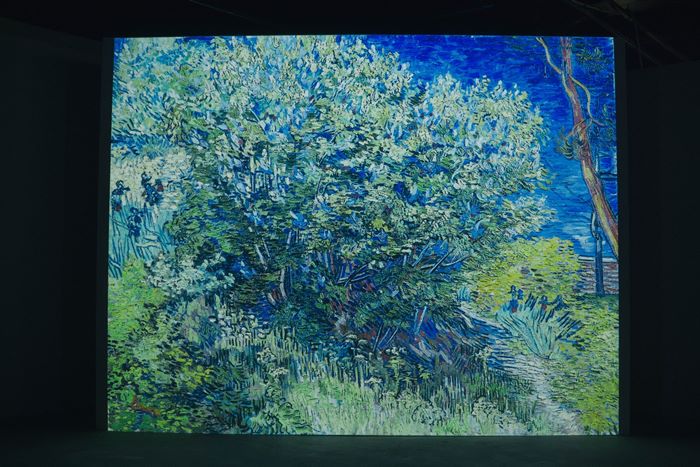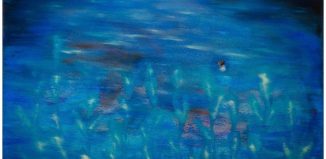A walk into the “Painting Universe” by Van Gogh: Emotional outburst through every brush stroke
Review by Nguyen Duc Tung for Hanoi Grapvevine and VCCA (*)
Do not copy or repost without permission from the writer and Hanoi Grapevine
* The article used materials from painter Vu Do during the art tour on March 9th, 2019 and documents about Van Gogh’s life on vangoghmuseum.nl
Not everyone has direct access to the original paintings by Vincent Van Gogh. Most people view via computers or phones with small screens, which is really hard to see the details clearly. Aiming to bring art closer to the public, the Vincom Center for Contemporary Art (VCCA) organized the exhibition “Reflective Impressions: Van Gogh and his works“, using very high-resolution projectors to show 35 paintings on large format. The exhibition is open from March 8th to April 9th, 2019.

Each step closer into the “temple of Van Gogh”, the audience will be more overwhelmed by the vibrant colors, fancy shapes and outburst of emotions that can hardly be expressed by words. Not only the overall picture but every brush stroke is filled with intense emotions.

From Montmartre hill, Van Gogh painted the scenery of southern Paris. In the foreground, the houses and the city’s majestic buildings have very clear outlines. The farther away, the outlines faint and the houses also lose detail. The special feature of the painting is the sky. Occupying a large area in the composition of the painting, most of the sky was painted in dark colors such as dark blue, gray, and even crimson red with a lot of broken brushes. The air is gloomy, somewhat chaotic, making huge pressure on the seemingly flourishing city.
A feeling of insecurity begins to “wake up” in mind!

The painting immediately attracts the audience’s attention. They once again have to “suffer” from the coldness of blue colors. Vincent Van Gogh used a lot of dots to create details for the work – completely different from the rest of the series. Each dot is like a pixel, merging with each other to draw the viewers into a world that has cold sky and blue roofs but warmth from the yellow and red colors of the buildings. According to the records of Van Gogh’s life, the artist appreciated the moments when he was with his beloved younger brother Theo so much that he kept every detail into his memory.
Following the projected images of Van Gogh’s paintings, we will realize that each work is a fierce “battlefield” between blue and yellow, coldness and warmth, gloom and vibrancy. These pairs of states plus the artistic intention of brush strokes give each audience a different intensity of emotion.
If paying enough attention to how Van Gogh builds the composition and viewpoint, the audience can realize that he has shown loneliness in such a fierce and direct way. The works, if painted on a wide scale, will have very few or even no people. On the contrary, the subjects occupy a large area in close-up paintings. Humans in Van Gogh’s paintings are either placed in disconnection with others, or must be crowded under the pressure of the frame.

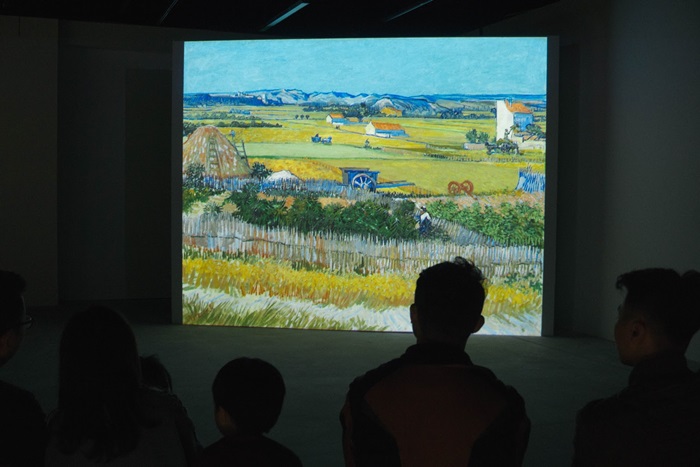

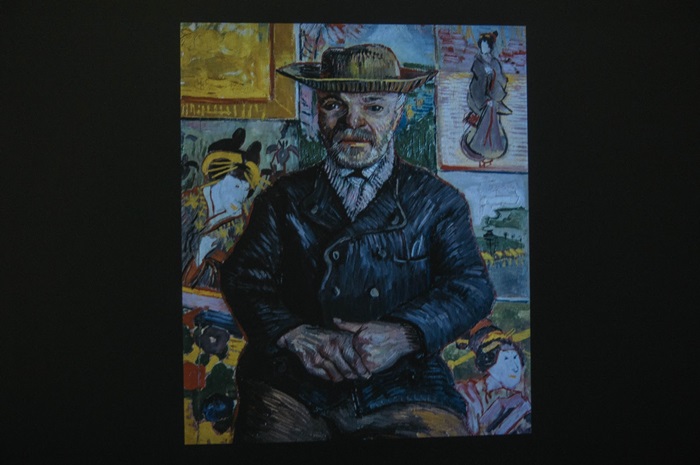
Most people come to Reflective Impressions: Van Gogh and his works probably looks forward to the famous painting “Starry Night” (1889). The work is shown in the central area of the exhibition in a much larger size than the original version.
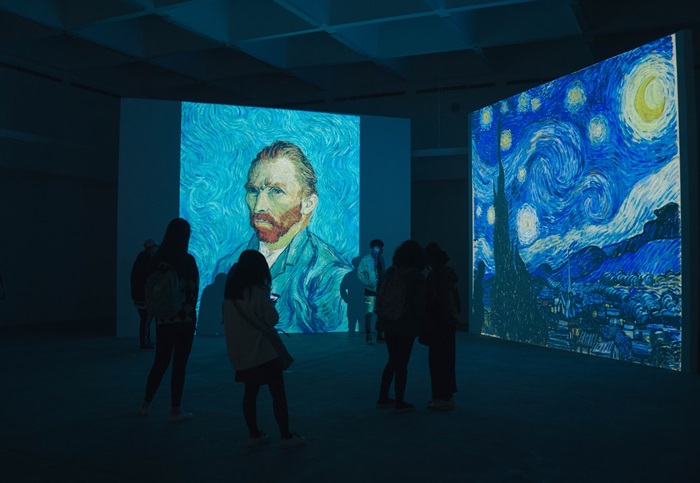
Bet you have seen the “moving” versions with many different styles such as three-dimensional images, 360-degree viewing angle or dynamic visual effects, … But when standing before the “simple” version at VCCA, you will realize that the painting itself is already a living space. If you take some steps away for overall observation, you will feel like you are gradually sinking into the world in which the coldness and loneliness of many blue colors are “reigning”. There is no need to be too concerned about whether it is a cloud, a wind or a tree. All you have to do is to enjoy Van Gogh’s brushes that roll up and sink back to form the endless flow of space and time.
Throughout his life, Van Gogh was a lonely man and suffered a lot of hatred because he was considered a madman with suicidal will. “Starry Night” was actually the view from the window of Saint-Rémy-de-Provence hospital in the city of Arles, southern France, where Vincent was receiving psychological treatment after having cut off his ear. How could a “crazy” person create painting with such an intense energy of life?!

Till the last works of life, Van Gogh remained faithful to the yellow-blue combination. Contrary to the ardent movement of things, light and air in the “Starry Night”, still-life paintings have great discipline. Although there are flowers withered due to the time, the painting is still lively and vivid.
Stepping out of Van Gogh’s “universe”, visual impressions and lonely emotions will remain in those who have let their souls float freely between the images. Embrace and listen to the lonely painter’s narratives reverberating from the past.
Other works by Van Gogh:




